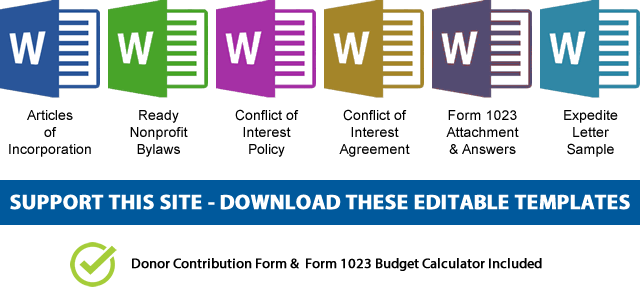What is Annual Information Return? (Commonly known as the Form 990)
Filing one of the Form 990 series-returns is mandatory for most exempt organizations. Form 990-series returns are unique and useful for four key reasons:
- Forms 990, 990-EZ, 990-N, and 990-PF are information returns for tax-exempt organizations such as 501c3. By definition, tax exempt nonprofits do not pay income taxes however the primary reason why such organizations must file a return is to provide information on their programs and activities. The IRS uses this information to verify that the nonprofit organization is operating in accordance with its stated tax-exempt purpose and not violating the rules and regulations governing tax-exempt status.
- Tax-exempt nonprofit organizations are required to make their returns “widely available” for public inspection. This means organizations must allow the public to inspect the Forms 990, 990-EZ, 990-N, 990-PF, and 990-T they have filed with the IRS for their three most recent tax years. Tax Exempt organizations are also required to provide copies of these returns when requested or make them available on the Internet through their websites.
- Exempt nonprofit organization returns are multi-jurisdictional forms, with nearly 40 states requiring exempt organizations to file some or all parts of a Form 990-series return to satisfy the states’ filing.
- In addition to ensuring that an organization is in compliance with state and federal regulations, these information returns promote transparency and accountability, which strengthens the relationship that an exempt nonprofit organization has with its stakeholders and funders.
If you’re looking for Instructions on how to file your Form 990, please refer to the form 990 instruction page.
Who Must File Form 990, Form 990EZ, or Form 990-N
Most nonprofit organizations exempt from federal income tax under section 501(a) must file an annual information return (Forms 990, 990-EZ, or Form 990-N). The form you file depends on your organization’s gross receipts for the tax year.
The following nonprofit organizations are not required to file any of the Form 990- series returns for a given tax year:
- Churches and related organizations
- State institutions whose income is excluded from gross income under Code section 115 and certain other government-affiliated organizations
- Organizations included in a group return for that tax year
Determining the $50,000 Gross Receipt Threshold
An organization’s annual gross receipts do not exceed $50,000 if the organization is:
- A year old and has received $75,000 or less in donations or pledges
- Between 1 and 3 years old and averaged $60,000 or less in gross receipts in each of its first 2 tax years
- Three years old or more and averaged $50,000 or less in gross receipts for the preceding 3 tax years (including the year for which the return would be filed)
Which Form 990 should you file for your 501c3
Exempt nonprofit organizations are required to file a Form 990 – if its gross receipts and total assets are above certain limits – or a Form 990-EZ or Form 990-N.
Gross receipts are the amount an organization received from all sources without reduction for any costs or expenses.
Total assets are the amount reported by the organization on its balance sheet as of the end of the filing year, without reduction for liabilities.
Tax year is the annual accounting period for which the Form 990 is being filed, whether the calendar year ending December 31 or a fiscal year ending on the last day of any other month.
Thresholds for Filing
The specific filing thresholds for tax years are updated often. You should check with the IRS’s website to find the current year threshold.
For tax years 2010 and beyond so far, nonprofit organizations must file Form 990 (e.g., it may not file Form 990-EZ or Form 990-N) if it has annual gross receipts of:
- $200,000 or more for the tax year or total assets of $500,000 or more at the tax year’s end. An organization with annual gross receipts of less than
- $200,000 and total assets less than $500,000 for the tax year may file Form 990-EZ instead of Form 990.
Form 990-EZ
Form 990-EZ is a shorter and simpler version of Form 990 that can be used by many smaller organizations in place of Form 990.
Form 990-N
According to the latest threshold (you should always check for updates) an organization with annual gross receipts that are normally $50,000 or less may file Form 990-N instead of filing Form 990 or Form 990-EZ.
Filing form 900 is very simple and requires no specialized computer equipment or software. All you need to do is provide some basic information:
- Your employer identification number (EIN)
- Tax year
- Legal name and mailing address
- Any other names the organization uses
- Name and address of a principal officer
- Website address, if the organization has one
- Confirmation that the organization’s annual gross receipts are normally at or below the threshold ($25,000 for 2009; $50,000 for 2010)
- If applicable, a statement that the organization is going out of business
E-filing Requirements for form 990
Organizations with $10 million or more in total assets that file at least 250 returns during the calendar year (including income, excise, employment tax, and information returns) are required to file Form 990 electronically. For more information, visit www.irs.gov/efile and click on “Charities & Non-Profits.”
When to File the form 990
Nonprofits that are required to file a Form 990-series return must file Form 990, Form 990-EZ, or Form 990-N by the 15th day of the fifth month after their accounting period ends. For example, May 15 would be the due date for an organization with a December 31 year-end.
Extension of Time to File
Use Form 8868, Application for Extension of Time to File an Exempt Organization Return, to request an automatic 3-month extension of time to file Form 990 or Form 990-EZ and submit it on or before the original due date. Organizations can request a second 3-month extension by filing another Form 8868 before the initial extension expires, but must show reasonable cause for needing additional time. The IRS will not grant filing extensions that total more than 6 months for a given tax year. There is no extension for Form 990-N.
Penalties for Late Filing or Failure to File 990 or 990-EZ Returns
Against the Organization: If an organization’s gross receipts are $1 million or less, and if it is required to file Form 990 or Form 990-EZ and does not file on time, it may be charged a penalty of $20 a day, up to the lesser of $10,000 or five percent of its gross receipts for the year, unless the organization can show that the late filing was due to reasonable cause. Organizations with annual gross receipts over $1 million are subject to a penalty of $100 per day for each day failure continues, with a maximum penalty with respect to any one return of $50,000. The penalty begins on the due date for filing the Form 990. There is no late filing penalty for Form 990-N.
These penalties may also be charged if the organization files an incomplete or inaccurate return. Organizations that are required to file electronically but file a paper return instead generally are deemed to have failed to file the return.
Beware! An organization that fails to file Form 990, Form 990-EZ, Form 990-PF, or Form 990-N for three consecutive years will have its tax-exempt status automatically revoked as of the filing due date for the third return.
Loss of exempt status may mean that an organization will need to pay taxes, file income tax returns, and its contributors will not be able to deduct their donations.
Nonprofits must also apply (or reapply) for tax-exempt status reinstatement by filing Form 1023 or 1024 and pay a user fee to have its tax- exempt status reinstated.
Against Responsible Person(s): If the nonprofit organization does not file a complete return or does not furnish correct information, the IRS will send the organization a letter that includes a fixed time to fulfill these requirements. After this period expires, the person failing to comply will be charged a penalty of $10 a day unless he or she shows that failure to comply was due to reasonable cause. If more than one person is responsible, they are jointly and individually liable for the penalty. The maximum penalty on all persons for failures with respect to any one return shall not exceed $5,000.
There are also penalties, fines, and/or imprisonment for willfully not filing returns and for filing fraudulent returns and statements.
Penalties for Late Filing or Failure to File 990 or 990-EZ Returns
To avoid penalties, an nonprofits must do the following:
- Complete all applicable parts, schedules, and line items
- Unless instructed to skip a line, answer each question on the return
- Make an entry (including a zero when appropriate) on all lines requiring an amount or other information to be reported
- Provide required explanations as instructed
- Sign the return
- File by the deadline
Form 990 Disclosure
The law requires that you make available a copy of your filed Form 990 and all attachments and schedules to anyone who requests it – except certain portions of Schedule B, Schedule of Contributors, for certain organizations. The IRS is also required to make your return available on request. Please see Nonprofit Organizations Public Disclosure Requirements for more details.
 NOTE: If you’d like to receive the following organizing documents:
NOTE: If you’d like to receive the following organizing documents:- Nonprofit Articles of Incorporation,
- Nonprofit Bylaws,
- Nonprofit Conflict of Interest Policy,
- Conflict of Interest Policy Acknowledgment,
- Form 1023 Attachment with all the answers,
- Form 1023 Expedite Letter template,
- and Donor Contribution Form
in Microsoft Word Document format, please consider making a donation and you’ll get to download them immediately. Not only they're worth well over $1000 in value, they will save you weeks of copy pasting and formatting as they are ready to go templates which only need changing names and addresses.

